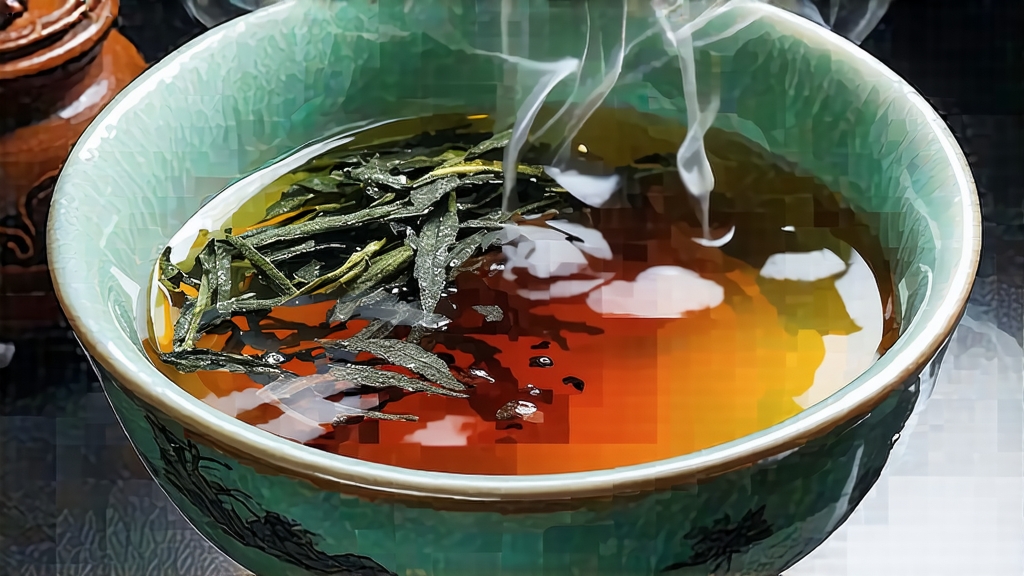
Tie Guan Yin, literally “Iron Goddess of Mercy,” is more than a tea; it is a cultural bridge that carries 300 years of Fujianese ingenuity, Buddhist folklore, and the scent of orchards after spring rain. To the international palate it offers a paradox—at once green and floral like a Taiwanese high-mountain oolong, yet deep and biscuity like a lightly roasted Da Hong Pao. Understanding this tea means entering a microclimate where morning fog clings to granite outcrops, where farmers wake at 4 a.m. to fire charcoal pits whose heat will decide whether a leaf becomes a jewel or a casualty, and where a single 30-second infusion can whisper stories of imperial tribute, maritime tea clippers, and the quiet devotion of monks who still place the first pour before Guanyin’s statue.
History: From Imperial Tribute to Global Cup
The most accepted origin story dates to the Yongzheng era (1723–1735). A devout farmer named Wei Yin in Anxi’s Songyan village found a deserted iron statue of the Bodhisattva Guanyin in a mountain grotto. After carrying it home and burning incense daily, he dreamed of the goddess pointing to a cave behind his fields. There he discovered a single tea shrub whose leaves glowed emerald in moonlight. Cuttings from that shrub, grafted onto local Hongxin cultivar, became the first Tie Guan Yin. By the Qianlong period the tea had reached Beijing’s Forbidden City, wrapped in bamboo-leaf parcels lined with lotus petals. European records from 1869 list “Ti Kuan Yin” among the top three Chinese teas auctioned in London alongside Keemun and Lapsang Souchong. Today Anxi county produces 45,000 metric tons annually, yet only 8 % qualifies as traditionally crafted, charcoal-roasted “Nong Xiang” style—the version most revered by connoisseurs.
Terroir: Why Anxi’s Granite Breath Matters
Anxi sits on the 25th parallel north, 600–1,200 m above sea level, where red lateritic soil is laced with quartz and feldspar. These minerals dissolve slowly, feeding the tea roots with potassium and magnesium that translate into a lingering “yan yun”—a mineral echo that dances at the back of the throat. Day-night temperature swings of 10 °C slow leaf growth, condensing amino acids and aromatic volatiles. The county’s 68 % humidity and 1,800 mm annual rainfall create the perfect stage for the tea’s signature “yin hua”—the invisible enzymatic choreography that happens during the 16-hour partial-oxidation cycle.
Cultivars: Red Heart vs. Green Tail
True Tie Guan Yin must be cloned from the original Hongxin (“red heart”) cultivar, whose young leaf shows a purplish-red petiole and serrated edge with 21 teeth. Market gardens often plant the faster-growing Lüxin (“green tail”) or the hardy Maoxie, but these lack the cultivar’s signature magnolia lactones. DNA fingerprinting at Fujian Agriculture University shows Hongxin contains a unique terpene synthase gene (CsTPS1) responsible for the tea’s peach-lily bouquet. When buying loose leaf, look for the tiny white peach-fuzz on the reverse side of mature leaves—an unmistakable biomarker of Hongxin heritage.
Craft: The 24-Step Ballet of Leaf Transformation
- Picking: Only the “zhong kai mian” standard—three half-open leaves—between 11 a.m. and 2 p.m. when surface moisture has evaporated.
- Sun-withering: 20 minutes under 38 °C solar intensity until leaf water drops to 68 %.
- Cooling: Moved indoors on bamboo trays for two hours; the leaf “awakens” and releases grassy aldehydes.
- Tossing: The critical “yao qing” phase; leaves are tumble-shaken in a bamboo drum 300 times over 45 minutes, bruising edges to invite oxidation while keeping the center green.
- Oxidation: 30–50 %, judged by the unmistakable apple-skin aroma and the transition from grassy to honeydew.
- Fixation: A 270 °C wok roast for seven minutes halts oxidation and locks in floral notes.
- Rolling: Vertical pressure plus rotary kneading breaks cell walls, forming the